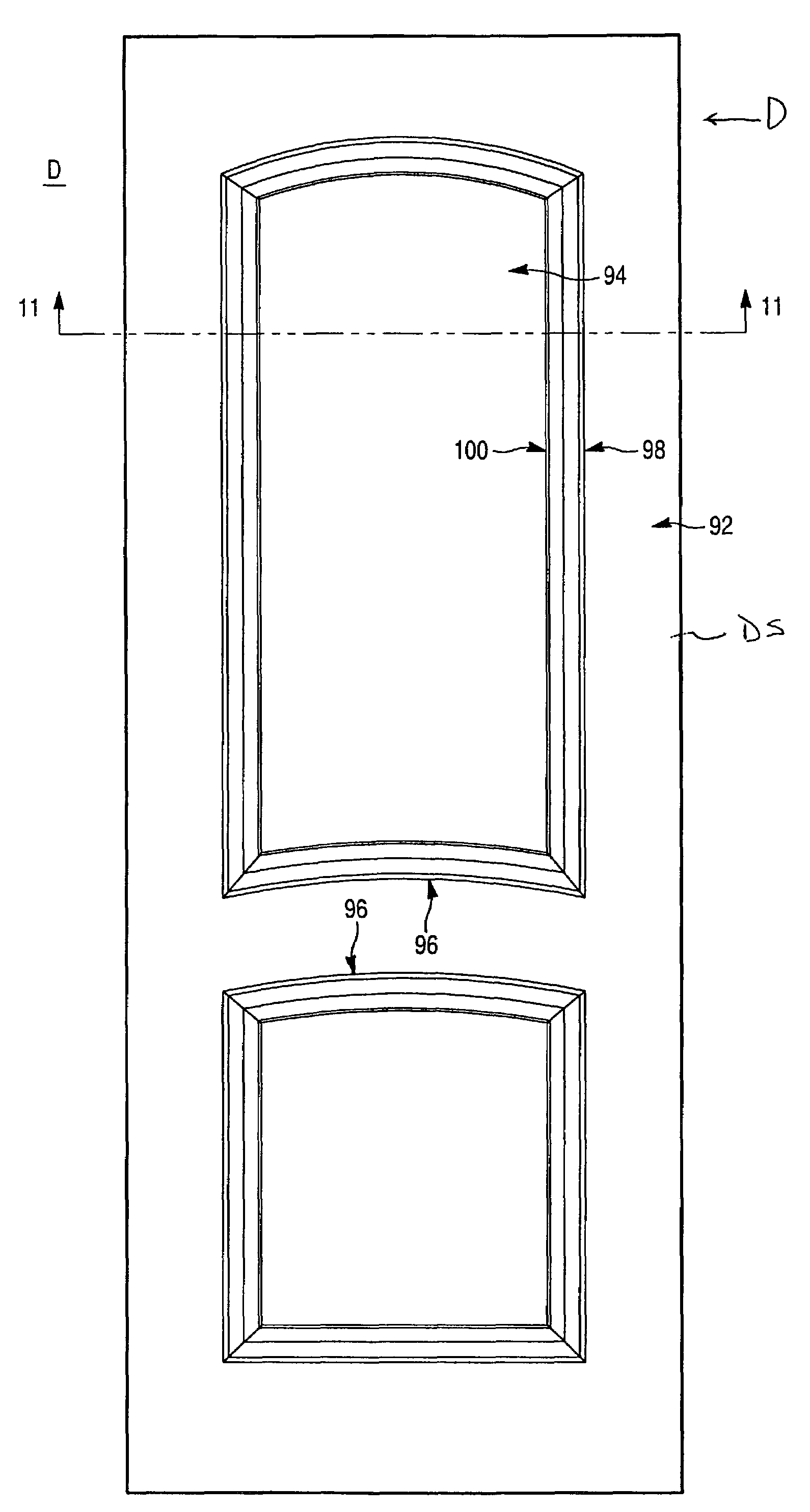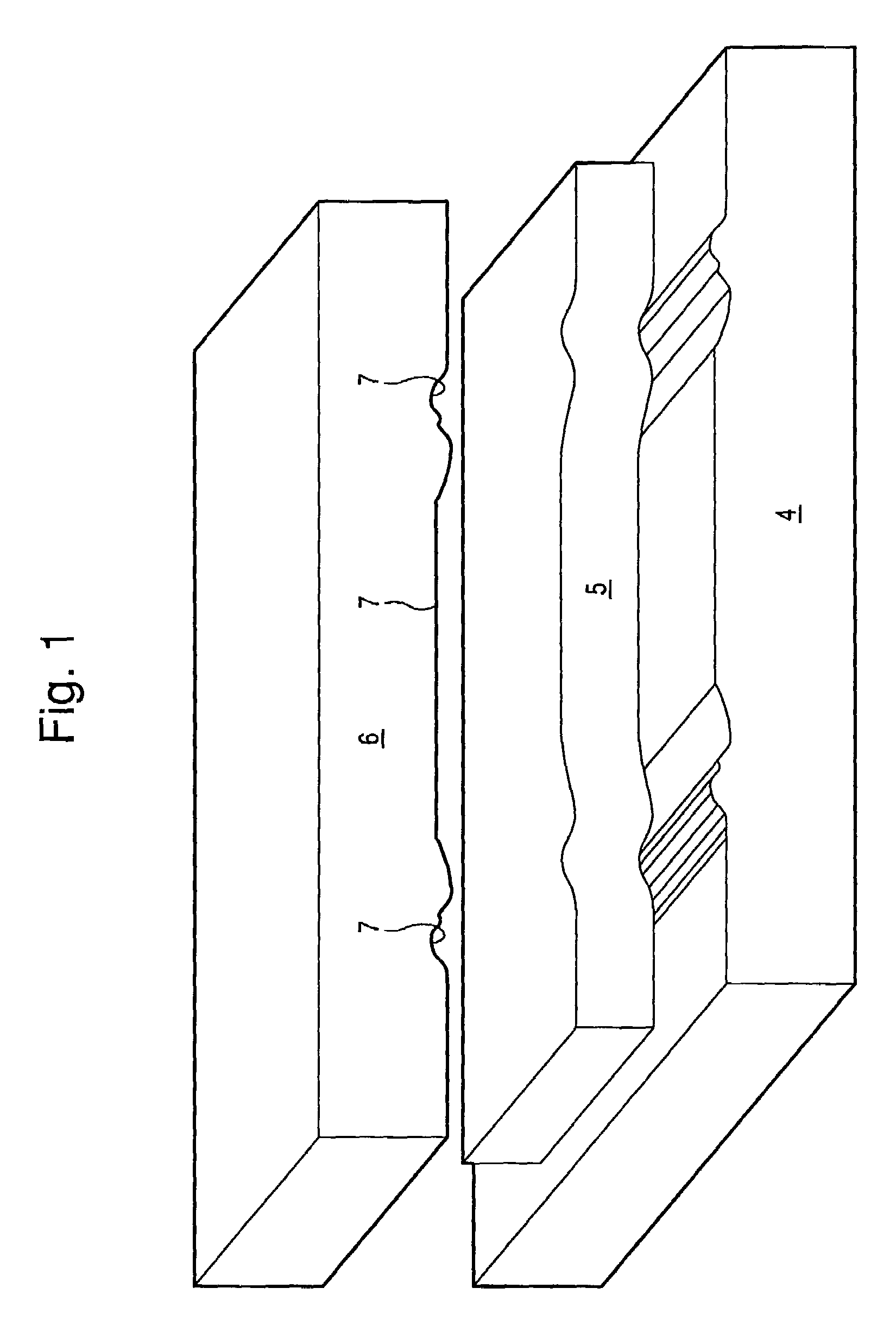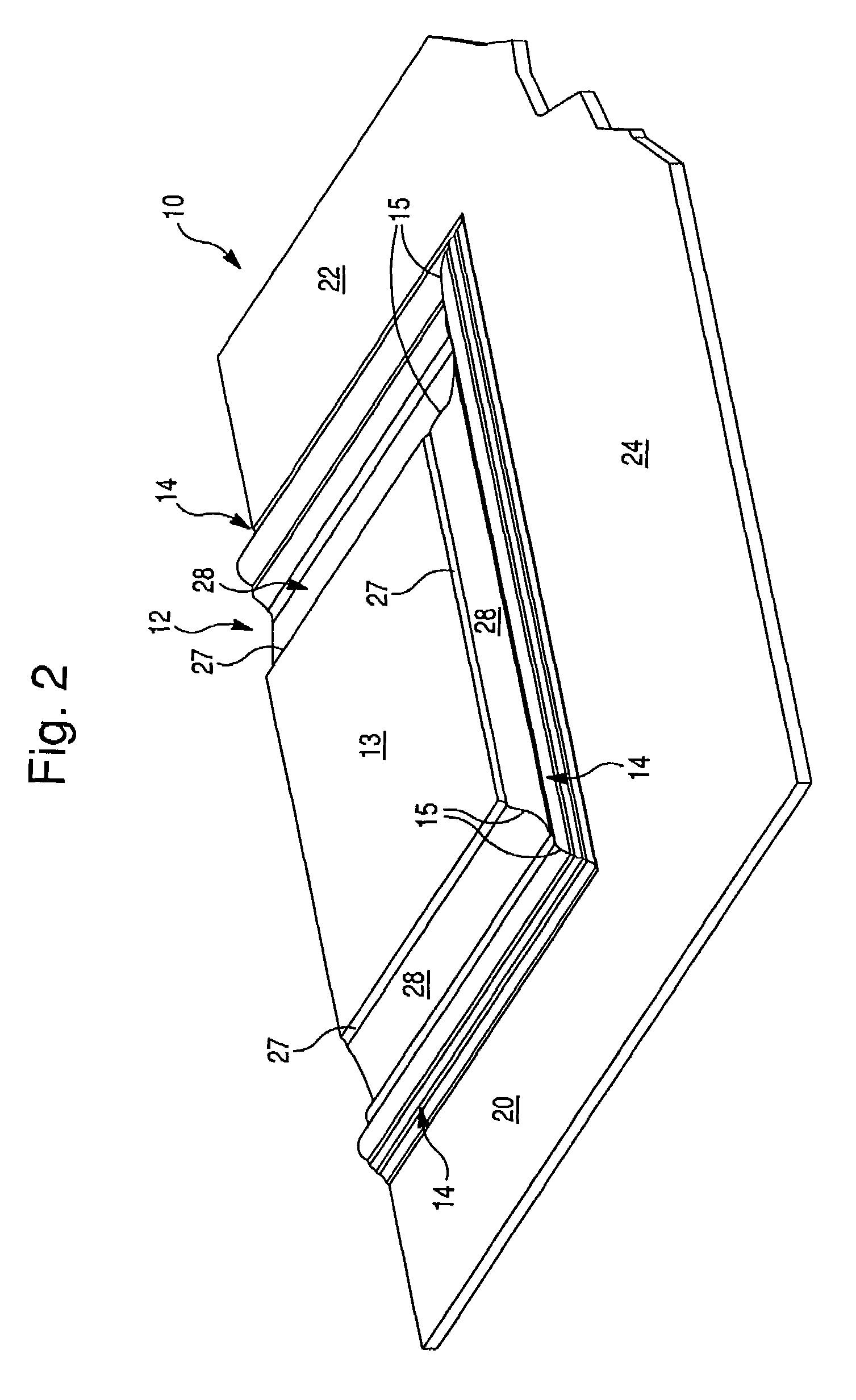Reverse molded panel, method of manufacture, and door manufactured therefrom
a reverse molding and panel technology, applied in the field of reverse molding (profile up, as molded) wood composite articles, can solve the problems of difficult reverse molding, difficult to reverse mold and emboss deep draws into compressed wood fiber mats, and high cost of historic treatment of real wood wainscots, etc., to achieve excellent transfer of mold detail, high density, and no visible fiber fracture
- Summary
- Abstract
- Description
- Claims
- Application Information
AI Technical Summary
Benefits of technology
Problems solved by technology
Method used
Image
Examples
Embodiment Construction
[0036]In the preferred embodiment shown in the drawings, the molded wood composite articles of the present invention are molded in the form of wainscot paneling to be adhered to a planar interior wall between a wall base board and a wall chair rail, to simulate solid, natural wood wainscot millwork, as shown in FIG. 2. It should be understood, however, that the principles of the present invention apply to much more than the manufacture of wainscot and also applies to the manufacture of doors or door skins, particularly cabinet and entry door facings, as well as any molded, man-made composite wood article that includes one or more reverse-molded raised millwork designs adjacent to a planar surface portion of the molded article. Examples of other composite, reverse-molded wood articles that are capable of being manufactured in accordance with the principles of the present invention include decorative hardboard; interior and exterior passage door skins, cabinet door skins, garage door ...
PUM
| Property | Measurement | Unit |
|---|---|---|
| angle | aaaaa | aaaaa |
| angle | aaaaa | aaaaa |
| thickness | aaaaa | aaaaa |
Abstract
Description
Claims
Application Information
 Login to View More
Login to View More - R&D
- Intellectual Property
- Life Sciences
- Materials
- Tech Scout
- Unparalleled Data Quality
- Higher Quality Content
- 60% Fewer Hallucinations
Browse by: Latest US Patents, China's latest patents, Technical Efficacy Thesaurus, Application Domain, Technology Topic, Popular Technical Reports.
© 2025 PatSnap. All rights reserved.Legal|Privacy policy|Modern Slavery Act Transparency Statement|Sitemap|About US| Contact US: help@patsnap.com



